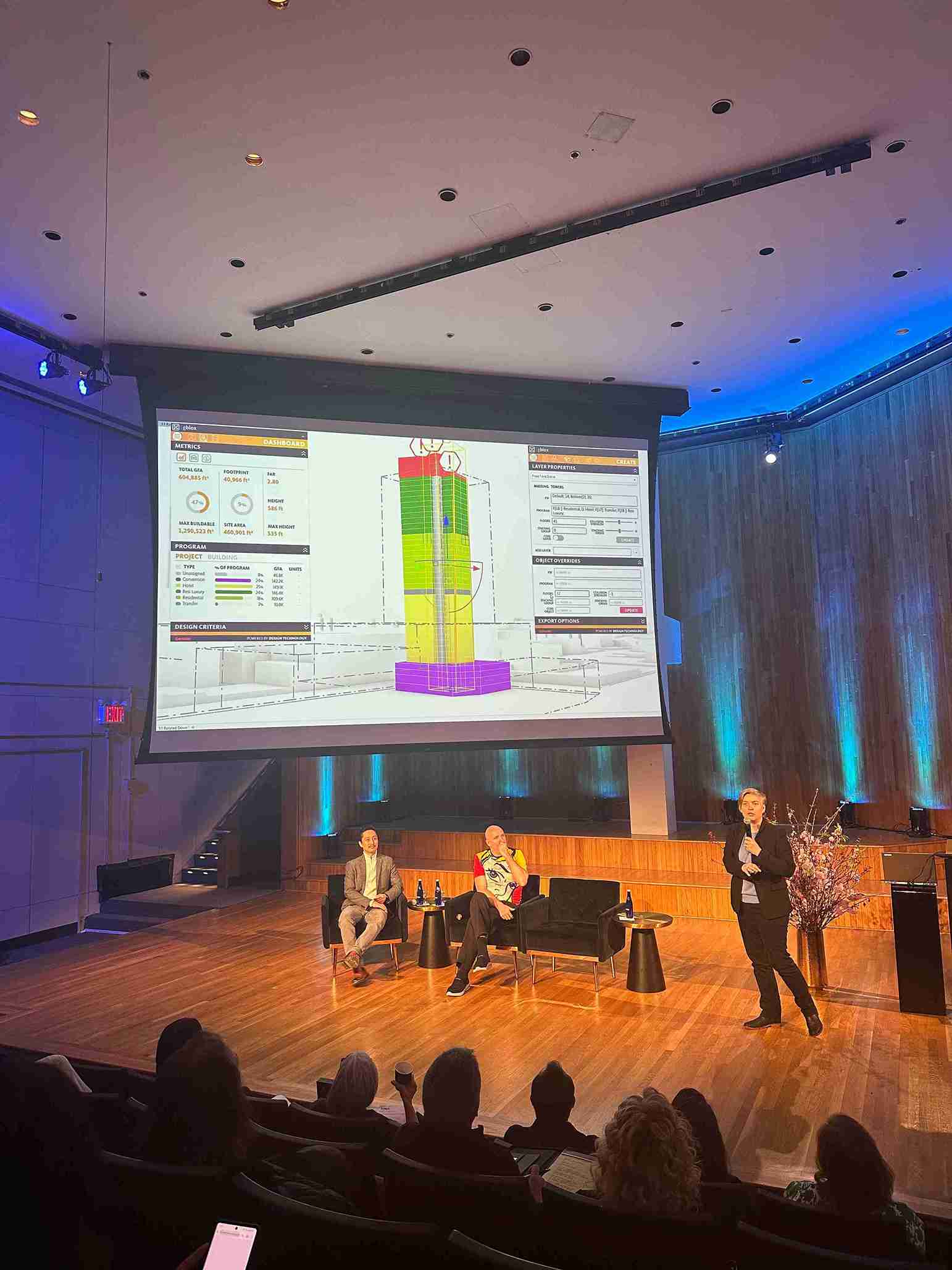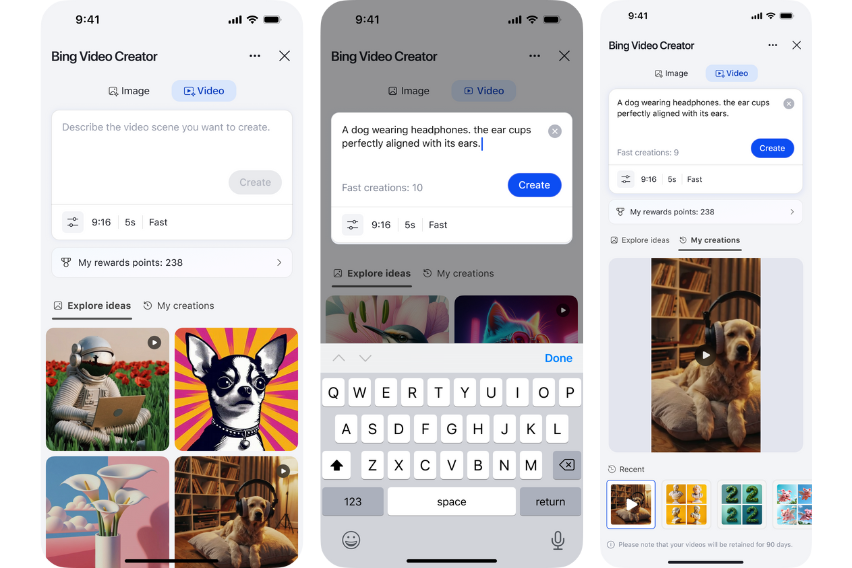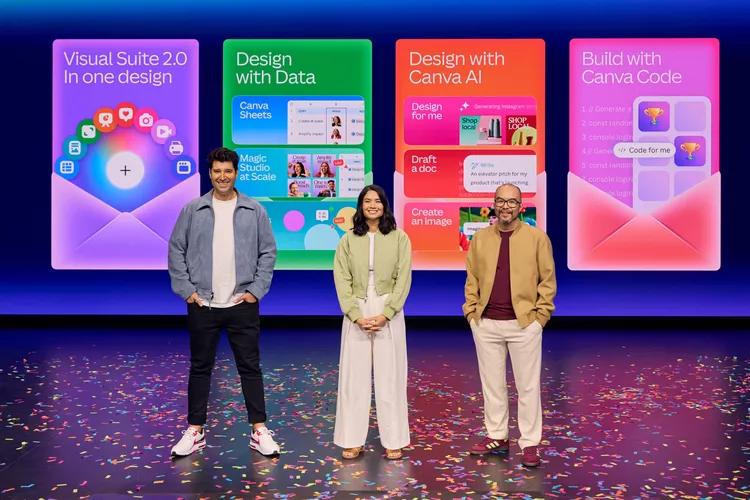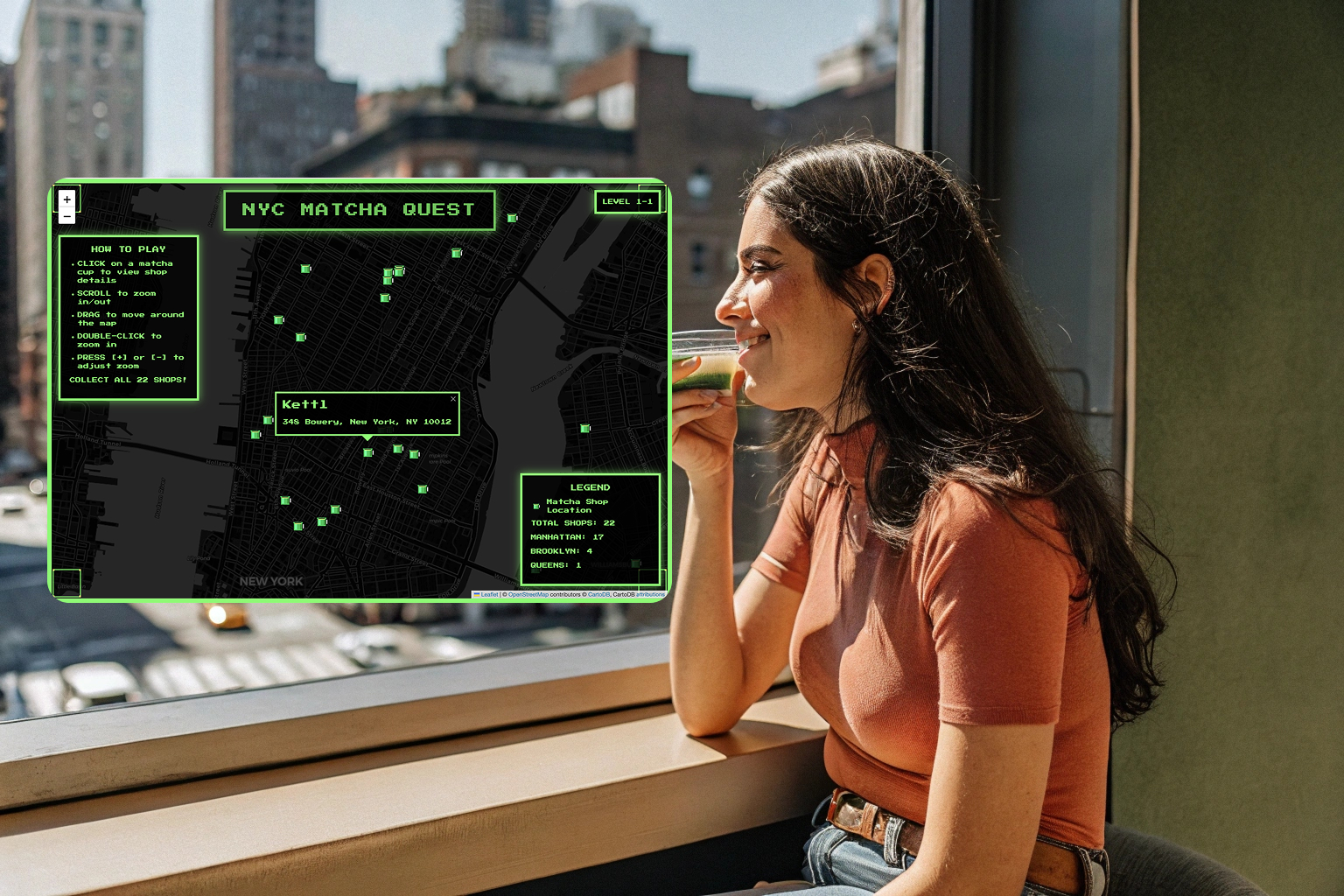The second discussion of the day, Panel 2: AI at the Intersection of Design and Media, asked a provocative question: Can an AI-generated image make you feel something? Creatives from architecture, tech, and academia came together to explore how AI is transforming not just what we see, but how we build emotional, cultural, and narrative resonance across mediums. Moderated by Ethan Lu (Assistant Chair, Interior Design, FIT), the conversation featured Rupert Breheny (Founder, Cobalt AI) and Islay Burgess (Principal, Gensler), who shared their experiences navigating everything from responsive game characters to sustainability simulations.
AI as Story Architect: From Cities to Games

Rupert Breheny, who previously helped develop Google Street View and has built immersive experiences for platforms like Cobalt AI, broke down how AI is pushing storytelling into new dimensions—especially in gaming and worldbuilding. “We’re moving into a world where your favorite game character remembers if you were rude to them,” Breheny said, referencing dynamic NPCs (non-playable characters). “That level of nuance makes a space feel lived-in.”
He noted that this kind of emotional continuity is being explored not just in games, but in public infrastructure, like city planning. AI models can simulate how people navigate environments—and reduce risks like traffic fatalities.
“AI can help minimize fatalities by optimizing how cities are planned—that’s storytelling too. It’s about shaping how people move and feel in a space.”
He also referenced how Levi’s, H&M, and Mango are embedding AI in marketing and model development—not just for cost savings, but to craft a consistent brand universe. “People are creating hollow art,” he said. “But when you layer in composition and meaning, it gets powerful again.”
Talk to the Machine Right, and It’ll Show You What Words Can’t
Ethan Lu, drawing from his background in both design and academia, emphasized that working with AI starts by understanding how it “thinks.” “Being bad at language makes you bad at prompt engineering,” Lu said. “AI understands semantics. If you don’t feed it context, it won’t return anything meaningful.” He framed prompt-writing as its own creative language—one that designers, writers, and technologists will need to master to get meaningful output.
Islay Burgess, Principal at Gensler, added that this linguistic awareness is especially powerful in architectural visualization. Her team uses AI tools to translate building concepts into immersive, real-time experiences. “It’s another language,” she said. “It connects professionals with non-researchers and lets you see what’s being built before it exists.”
But both cautioned that literacy alone isn’t enough. “Use your head,” Lu said. “Don’t overly rely on AI. You still need to know what makes a good story, image, or experience.”
Blandness Is the Enemy
A recurring concern? Sameness. AI tools, if used without clear creative intent, tend to churn out generic visuals. “Blandness is a real problem,” Breheny said. “Mass-generated outputs tend to repeat the same aesthetic unless you push them intentionally.”
Michael Ferraro (Executive Director, FIT DTech Lab) echoed this during Q&A, adding, “Line drawing lets the mind free-flow. It’s still one of the purest ways to get ideas out.”
The panelists agreed: human taste still sets the ceiling for how interesting AI-generated design can get.
Generative Design Still Needs Real Designers

Islay Burgess brought the conversation into physical space. At Gensler, she works at the intersection of tech and architecture—and sees these tools as collaborators, not competitors. “Generative design isn’t about replacing the architect. It’s about expanding what we can imagine.”
Her team uses AI to model sustainability outcomes, test different building materials, and visualize environmental impact before a project even breaks ground. “We pair AI with sustainability data to simulate material impact and optimize for environmental goals.”
But she also issued a warning: “You still need to be a subject expert. Otherwise, you won’t know when the AI is wrong—or unhelpful.” Burgess emphasized that good use of AI means maintaining agency at key points in the process: “If you don’t control the why, the output controls you.”
The Tool Is Only as Good as Its Context
Across media, architecture, and design, the panelists kept circling back to one core idea: AI is powerful, but it doesn’t know what matters unless you do.
Whether you’re crafting an NPC storyline, launching a visual campaign, or prototyping a building with environmental goals in mind, creativity is still human work. The best AI tools in design? They’re the ones that help you express your taste faster, not replace it.
➡️ Up next: Design, Produce, Ship—Then Repeat: What AI Actually Solves in Fashion
➡️ Previous: From Skeptic to User: How FIT Teachers and Students Are Experimenting with AI
⬅️ Back to Series Overview







